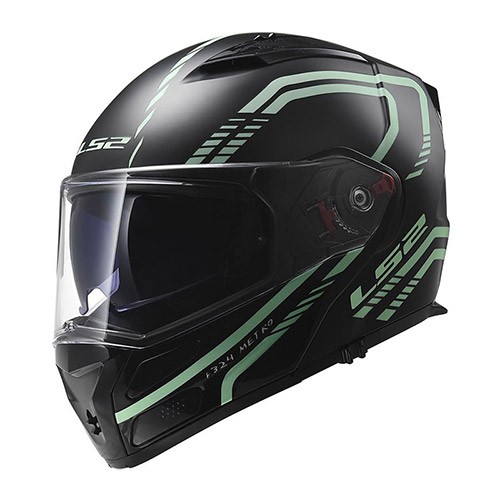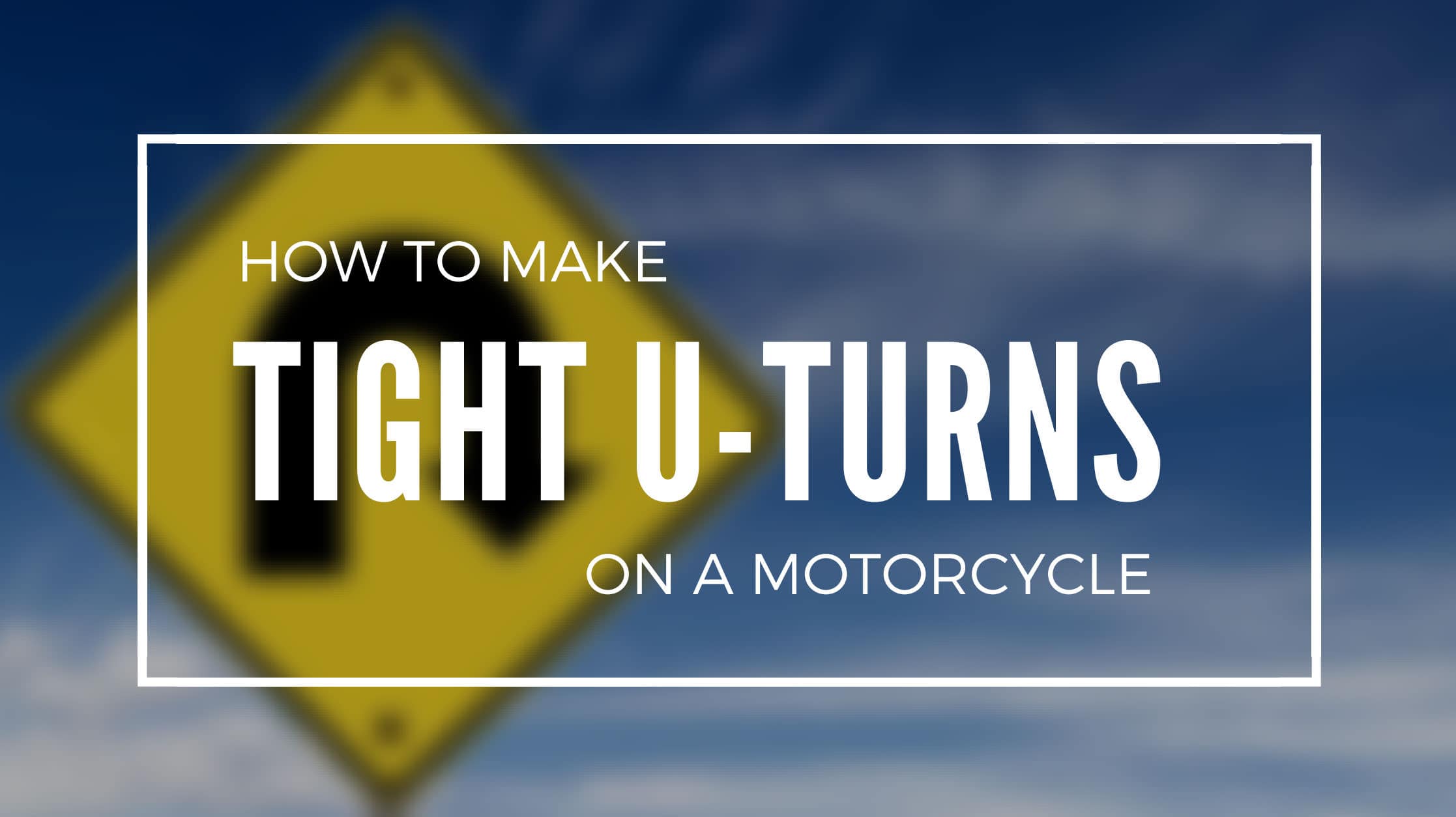 Performing a U-turn on a motorcycle is one of the toughest maneuvers, particularly for new riders. In fact, many veteran riders find U-turns so tricky because they rarely have the opportunity to practice. Here’s a quick walkthrough to help you master the U-turn in tight spaces without dropping your bike.
Performing a U-turn on a motorcycle is one of the toughest maneuvers, particularly for new riders. In fact, many veteran riders find U-turns so tricky because they rarely have the opportunity to practice. Here’s a quick walkthrough to help you master the U-turn in tight spaces without dropping your bike.
Step One: Prepare for the Turn
It’s best to start off going in a straight line before the actual turn to prepare and maintain a steady turning speed. Slip the clutch, open the throttle and gently ease onto the rear brake. Some riders recommend creating a bit of a struggle between the engine and the rear brake to add stability. The speed you’re traveling as you approach the turn is the same speed you should maintain as you make the U-turn as well.
Step Two: Starting the U-Turn
Next, turn your head sharply to look where you’re planning to turn. Your head should be turned sharp enough that your chin rests on your shoulder. Keep your eyes fixed on this point and turn the handles while maintaining a vertical posture. Allow only the bike to lean into the U-turn and be sure to apply pressure to your outside footpeg. This will negate the lean to a degree. If it helps, shift your weight toward the outside edge of the bike seat.
Step Three: Addressing Potential Problems
If you feel like the bike is falling in, you are probably leaning into the U-turn instead of keeping your posture straight. Fix this by straightening your back and applying more weight to the footpeg on the outside. It may also help to open the throttle and release the clutch a little to reduce the momentum pulling the bike down. As you turn, remember to use the rear brake, which helps the control feel tighter and reduces the bike’s tendency to fall down.
Another potential problem is the bike heading toward the curb. This is a common problem for new riders attempting U-turns because their attention is often distracted. For some beginners, just looking at the curb can throw off their attention, cause a panic or cause them to steer off course. Remember to keep your eyes focused on where you want the bike to be at the end of the U-turn.
U-turns take a great deal of practice and require more time and attention than general riding. New riders should either enroll in a motorcycle training course or set aside some time each week to practice tight U-turns in parking lots until they perfect this necessary skill.
Need Motorcycle Insurance?
Enjoy your ride while feeling safe with the best insurance coverage.
Motorcycle Tight U-turn Like a Professional Rider
Positioning the body
Mastering your body position is the first step to making a perfect U-turn. It’s all about finding the right mix and keeping calm during the move. As a skilled rider, you know that keeping your body in the right place is the key to control and steadiness.
When going into a U-turn, make sure your weight is on the inside of the turn. Keep your upper body straight and your arms loose and slightly bent at the elbows. Use your legs and lower body to control the motorcycle’s balance. This will give you the support you need as you lean into the turn.
Don’t forget that your body works as a counterbalance to the lean position of the bike. So, keep your hands on the handlebars light and don’t lean too far into the turn. By keeping your body steady and relaxed, you’ll have more control over how your motorcycle moves. This will make the U-turn smoother and easier to handle.
Scanning and Being Aware
As an expert rider, you know that looking and being aware of your surroundings are the most important parts of safe riding. It’s the same when it comes to making a tight U-turn. Before you start the move, take the time to look around and see if there are any possible dangers.
Look for passing cars, people, or anything else that might get in your way. Keep your eyes up and look forward and around the turn you want to make. Because you are always aware, you will be able to act quickly and make any changes you need to make during the U-turn.
During the move, it’s important to stay aware of what’s going on around you. Keep an eye out for changes in the surroundings and other possible dangers. By keeping your attention on the road ahead and being aware of what’s going on around you, you’ll be able to predict and deal with anything that comes up.
Changes to Slow Speed
To make quick U-turns, you need to be able to control your speed at low speeds. As a seasoned rider, you know how to keep your motorcycle stable and control its speed with great accuracy.
During the U-turn, pay close attention to the clutch and the engine. To keep the same speed, gradually apply power while slipping the clutch. This careful balance of power delivery is important for keeping the bike steady and avoiding rapid jerks or stops.
Spend some time doing figure eights or tight loops to improve your ability to move around at slow speeds. These drills will help you improve your balance and control, giving you the confidence to make tight U-turns.
Setting up and changing a bike
As a rider with a lot of experience, you know that different bikes have different features that can affect how well they make U-turns. Take the time to learn your bike’s strengths and weaknesses, and if you need to, make any changes to make it easier to turn.
Think about making changes or additions that fit the type of your motorcycle. For example, playing around with the width of the handlebars or the ratio of the back sprocket can make your bike faster and more quick when making U-turns.
Remember that each bike has its own personality, so take the chance to get to know yours well. Learn how it works and how it reacts to what you put in. With the right setting and changes made to your motorcycle, you’ll be able to make tight U-turns with more control and trust.
Technique for Counter-steering
As an expert rider, you know how to countersteer, which is a basic skill that can also be used to make U-turns. For easier, more controlled turns, you can countersteer by putting pressure on the inside wheel.
When you want to lean the bike into a U-turn, push gently on the inside handlebar. This seemingly backwards method moves weight to the front tire and makes the bike lean in a smooth and predictable way. Mastering countersteering will make the U-turn more stable and give you more control.
During your U-turn drills, you should practice counter-steering. Pay attention to putting the right amount of pressure on the wheels to start and keep the lean position you want. With time and practice, you’ll get a natural feel for counter-steering, which will make making U-turns easier and more accurate.
Practice U-turns in an Emergency
As an experienced rider, you know how important it is to be able to make tight U-turns in an emergency. These moves are useful not only for getting through small areas but also for getting around obstacles on the road that you didn’t see coming.
Practice making quick U-turns often to be ready for these kinds of situations. Make fake problems or unexpected situations in a controlled setting, like a large parking lot. This practice will help you develop the skills, speed of response, and ability to make decisions that you’ll need in high-pressure scenarios.
By doing emergency U-turns over and over again, you’ll train your muscles and improve your reactions. With this practice, you’ll be able to make tight turns quickly and with confidence when there are sudden dangers on the road.
Advanced Techniques
There are a few advanced methods that experienced riders can try to improve their U-turn skills. You need more control, skill, and confidence to use these methods.
Trail-stopping during a tight U-turn is a difficult skill that you should learn. To trail brake, you slowly apply the front brake while keeping the engine in control all the way through the turn. This method lets you control your speed and how your weight is distributed, making U-turns easier and faster. But it takes careful practice and a good understanding of how your motorcycle stops.
Also, using advanced body positioning methods can make a big difference in how stable you are and how much you lean when making U-turns. Consider “hanging off” the inside of the motorcycle by moving your body toward the inside of the turn while keeping your head and eyes on the planned path. This method moves the center of gravity, which lets you lean further while still staying stable and in control.
For these advanced skills, you need to be patient, practice, and know a lot about how your motorcycle works. Slowly add them to your skillset and focus on getting good at one at a time. Remember to put safety first and never do anything that makes you feel unsafe. With practice and persistence, you’ll get better at making U-turns and become a better rider generally.
Keep looking for ways to grow, whether it’s through professional training or by talking to other riders and learning from them. Getting better at U-turns is an ongoing process, and you should always be looking for ways to get better as a rider.
Want to Feel Safe on the Road?
It’s not just a motorcycle, it’s your passion. Protect it with insurance

